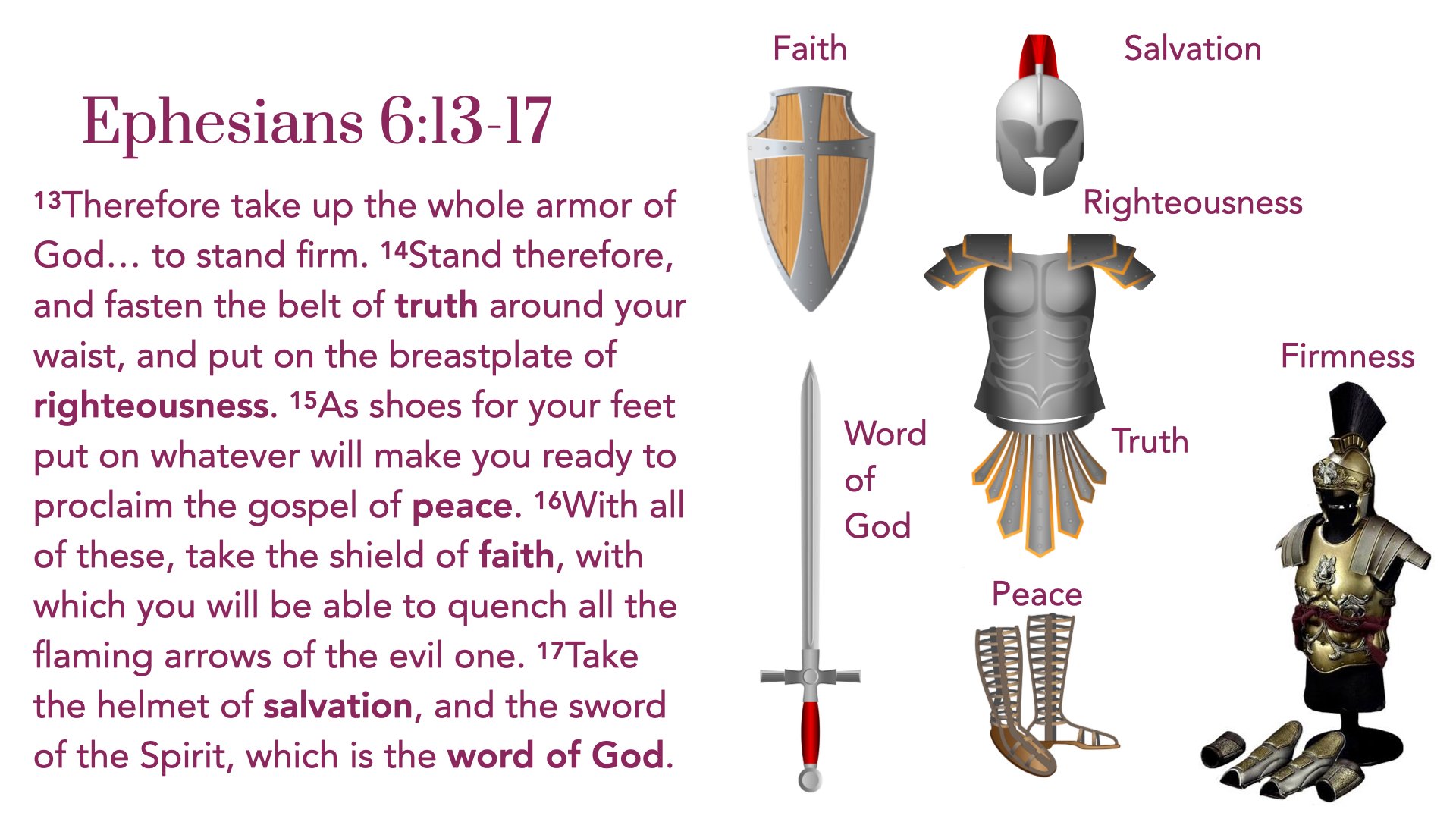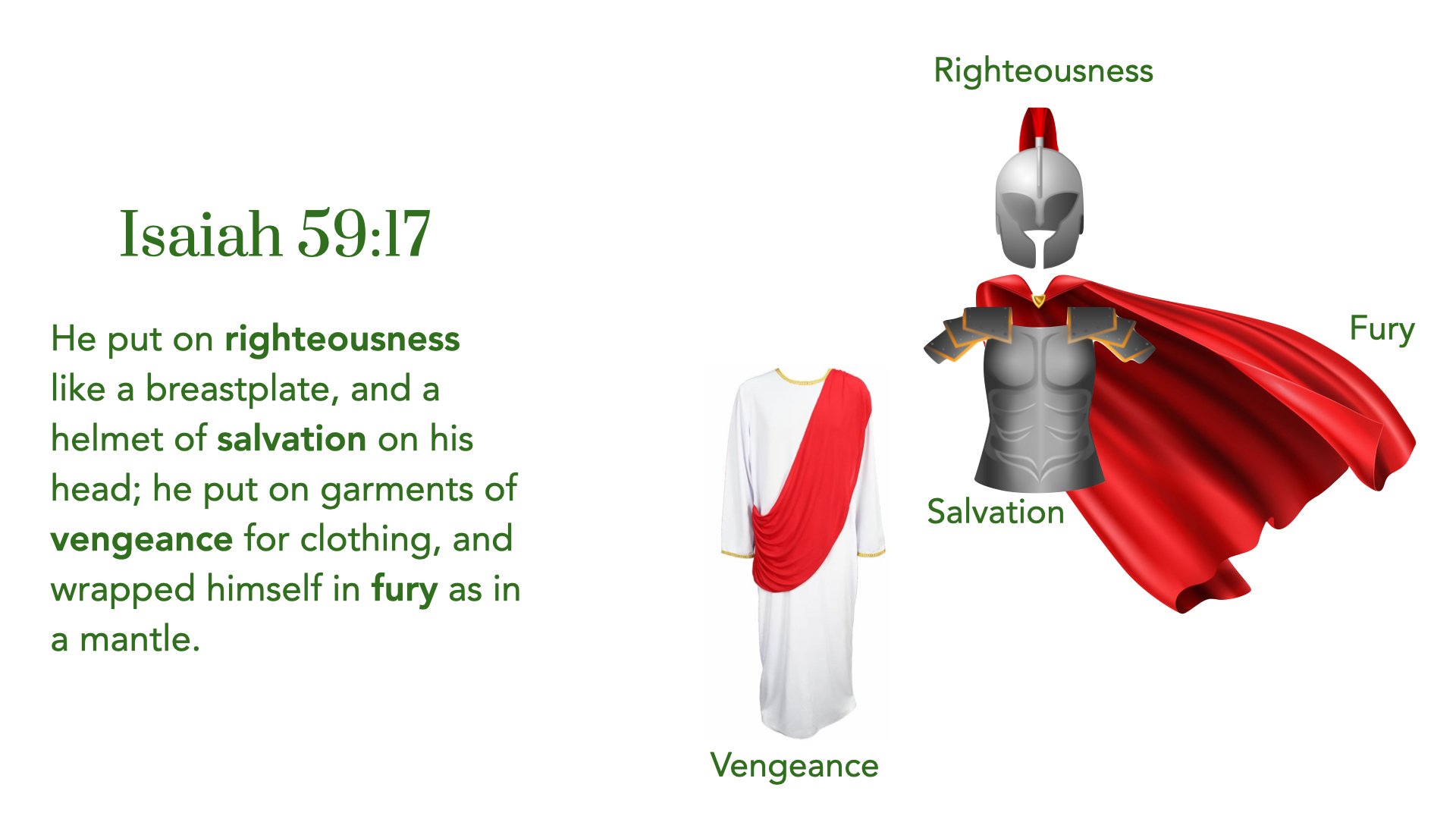Armor of God
You may have heard about Paul’s use of military metaphor in Ephesians 6:13-17, where he talks about putting on “the whole armor of God.” (v.11) But did you know it is not so much borrowed from the Roman military as it is ancient scriptural tradition?
Here is the full passage in the NRSV;
Depending on how you count it, there are as many as five definite items;
belt of truth
breastplate of righteousness
shoes of gospel/peace(?)
shield of faith
helmet of salvation
sword of the Spirit
Scholars are not sure if the letter to the Ephesians is really Paul’s writing or done in his name by a follower, but there is some consensus that it was written in captivity around 62 CE. The earliest letter in Paul’s name was to the Thessalonians, around 50 CE, and scholars are confident it was written by the apostle himself. It is there that we find similar language; “put on the breastplate of faith and love, and for a helmet the hope of salvation.” (1 Thessalonians 5:8)
This earlier, authentic Pauline epistle has a more complicated use of the helmet, adding “hope of” and had connected faith to the breastplate rather than the shield. There was no belt, shoes, shield, or sword in the first appearance of God’s full battle rattle, which isn’t looking all that “full.”
At first glance, we might think Paul is borrowing from Roman military equipment, of which he would have some knowledge through his many travels. But the truth is he is leaning more on his Jewish heritage than his Roman citizenship. In the inter-testamental period, a Greek text was composed by an Egyptian Jew on the subject of Wisdom from which the epistles to both Thessalonika and Ephesus have clearly borrowed;
The Lord will take his zeal as his whole armor, and will arm all creation to repel his enemies; he will put on righteousness as a breastplate, and wear impartial justice as a helmet; he will take holiness as an invincible shield, and sharpen stern wrath for a sword, and creation will join with him to fight against his frenzied foes.
Wisdom 5:17-20 has the breastplate and helmet and it cites the “whole armor” of the letter to the Ephesians. A sword is incorporated but likened to “wrath” rather than the Word. The mention of “zeal” also indicates a far less defensive stance than later iterations, as does the object of interest being God’s “frenzied foes” as opposed to the spiritualized targeting of rulers, authorities, and cosmic powers.
The last century Before the Common Era (BCE) is hardly pre-Roman though. Had Wisdom been the earliest appearance of this motif then maybe Paul was borrowing from Roman military. But the first is actually four or five centuries earlier when the Jews were returning from exile from Babylon after being overcome by the Persian empire.
Isaiah 59:17 is the earliest use of military equipment by God in the imagination of their people, in which the Lord “put on righteousness like a breastplate, and a helmet of salvation on his head; he put on garments of vengeance for clothing, and wrapped himself in fury as in a mantle.” It is interesting that the tradition is birthed in even starker terms than allowed for in Wisdom. There is no sword, but its wrath is exceeded by vengeance and fury.
The one item to bind these all together is the breastplate of righteousness and helmet of salvation. Wisdom alters the helmet (justice) and Thessalonians the breastplate (faith and love), but otherwise, these two articles remain consistent throughout. There is also a marked de-escalation from Isaiah to Paul that substitutes an angry, war-ready God with a (s)wordy spiritualized one.
There are plenty of ways to interpret this tradition in light of the debate about faith and military service, but I won’t get into that here. As an educational post, I wanted to highlight important passages for thinking more deeply about Christian soldiers and their place in scripture and tradition. What do you think? I made the following graphics to help illustrate the similarities and differences between the texts; green is Isaiah, blue is Wisdom, orange is Thessalonians, and purple is Ephesians. Click HERE to read the NRSV passages together at BibleGateway.





